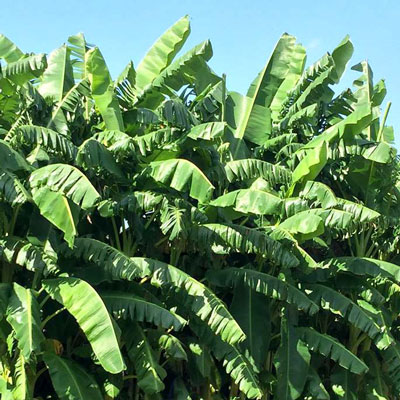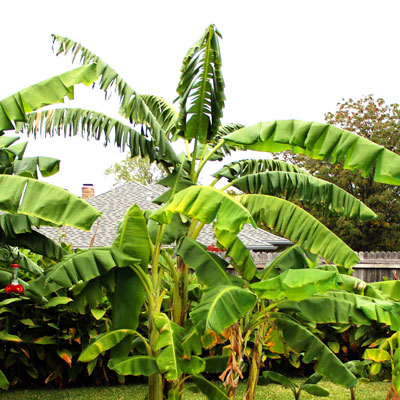What do I do with my banana plants now?
Your “smart” phone will tell you when, on average, you can expect the first killing freeze in your city. Try it. Just ask Google or Siri or whatever name you use for your assistant. Ask for the average date of the first killing freeze in your city.
That night of the first killing freeze is the night that all this luxuriant foliage and stem growth will “melt” to the ground. They’re tropical plants after all, not equipped to handle the cold.

Carrying the plants through the winter
In spite of the fact that they’re from tropical origins, banana plants are able to withstand sub-freezing temperatures and still survive to grow another year.
Once they die back to the ground and turn mushy the night of the first freeze, moisture will drain quickly away over the following couple of days. At that point it will be easy to clip off the dead tissues and send it to the compost.
Gardeners in South Texas may have nothing more to do unless temperatures drop into the low 20s. You can just keep your plants moist through the winter knowing that they’ll come through just fine.

From Central Texas and northward, as you’re mowing your lawn this month, you’ll be picking up fallen tree leaves in your mower bag. Empty the bag and pile the shredded leaves over the crowns of your banana plants. Cover each crown with 6 to 8 inches of shredded tree leaves and secure a piece of burlap against the leaves to hold them in place. That will keep them from blowing away.
Unless we have another one of those 1-in-100-year cold spells again this winter (like we’ve had several times in the past 10 years!), your banana plant should survive the winter and be ready to come back in the spring.
If we hit another unlucky spell and lose our plants entirely, nurseries will always be there waiting next spring.
